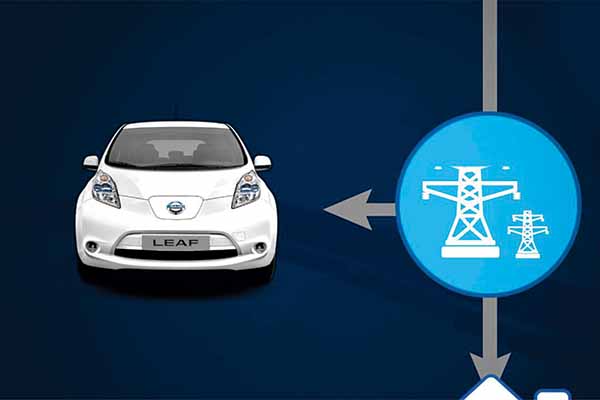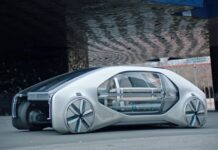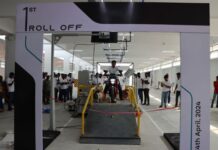The development of vehicle-to-grid (V2G) technology presents endless opportunities, and also provides us with a way of moving to a zero-carbon world. However, it needs the right ecosystem to thrive and ensure that its potential is fully realized. India has to tap into this technology to be at the forefront of the future of energy and mobility.
What is V2G?
Vehicle-to-grid is a technology that allows for using the battery inside an electric vehicle as an energy storage device. Once connected to the grid, the EV acts as a battery storage unit, thereby allowing for storing energy as well as other uses. An aggregated network of these EVs would thus act as a system that can perform numerous functions. The global cumulative demand for batteries is estimated to be around 9.3 terawatt-hours (TWh) by 2030. Of this, the demand for batteries in EVs alone is around 7 TWh. There is thus immense potential for using the batteries that would otherwise see a lot of idle time.
Using the battery in an EV for functions other than just mobility allows for better utilization of the resource and increase the value of the battery. It can also provide a revenue stream for the owners of the EVs, reducing the overall cost of the vehicle and making it a better proposition. Bringing together a number of EVs and creating an aggregated energy storage network would thus provide services to the grid while increasing the value of the batteries.
The basic function that such an aggregated network provides is that of energy storage. The intermittency of renewables means that energy storage is needed to complement them, to store excess energy production from sources such as solar and wind during periods of high production to use during periods of high demand. An aggregated network of EV batteries can perform that function. The absence of sufficient storage would result in renewable energy production being curtailed, as we see during certain periods when the grid is unable to absorb the energy produced. To avoid this, and to increase the green nature of the grid, energy storage is critical.
But there are other functions that a V2G system can perform, such as grid ancillary services. Examples of these include providing black start capability (ensuring that the grid can rise after a power blackout), frequency regulation (matching demand and supply in the grid), spin reserves (providing backup power to the grid at very short notice) and a whole host more.
Projects around the world
There are several projects by carmakers across the world on utilization of this technology, especially for customized local needs. Ford is working with PG&E, a utility in California in the USA, where they’re making use of a car’s battery as power backup during blackouts. California’s wildfire season sees the threat of power outages, and the V2G tech in the Ford F-150 has a battery that is large enough to power a home for up to 10 days.
In some markets, collaborations have advanced to the point that carmakers and energy companies have teamed up to implement energy storage services for the grid. Energy company ENGIE has one such project in Turin in Italy, set to come online in 2023. A third of this project, comprising 25 MW, is in the form of V2G storage and would help the grid with storage as well as ancillary services. This is through a collaboration with Fiat and would see the use of 700 Fiat 500s in the venture.
The Dutch city of Utrecht probably has the most advanced plans in the area of bidirectional charging. It aims to be the first bidirectional city in the world, using a pool of EV batteries to integrate renewable energy into the city’s grid. According to a study by the University of Utrecht, around 10,000 EVs with bidirectional charging would be sufficient to provide grid balancing services.
Opportunities and Challenges for India
V2G has an important role to play in India’s energy grid. India’s renewable energy capacity is set to grow to 500 GW by 2030, and it would need sufficient storage capacity to support the integration of renewables. Over the same period, about 40% of new vehicle sales in India are expected to be EVs. This is more pronounced in segments such as scooters, commercial 2 wheelers, and e-3 wheelers, where sales of EVs are expected to be over 75%. There thus exists a large opportunity to make use of the battery within these EVs.
However, there are a few challenges that are present for India before it can tap into this potential. As the growth of EVs is set to be in larger numbers in smaller vehicle segments, the amount of EVs needed to be aggregated to create a storage network is more. A mechanism that brings together these small vehicles, or even just the batteries within them, can unlock massive potential.
The other challenge is the creation of bidirectional charging stations that enable the aggregated network of batteries to work as an energy storage system. For EVs that run on either swappable batteries or fixed ones, the charging point has to be bidirectional to ensure that the batteries in these vehicles can be used as virtual storage systems. In the absence of this critical infrastructure, EVs can only receive energy and would not be able to send it back to the grid. The world, as well as India, needs storage solutions to progress on the path of zero carbon emissions in the sectors of energy and mobility. And V2G offers a solution to one problem while improving the proposition of another. India has to seize the opportunity that V2G presents to achieve the goals it has laid out for not just 2030, but beyond.
















